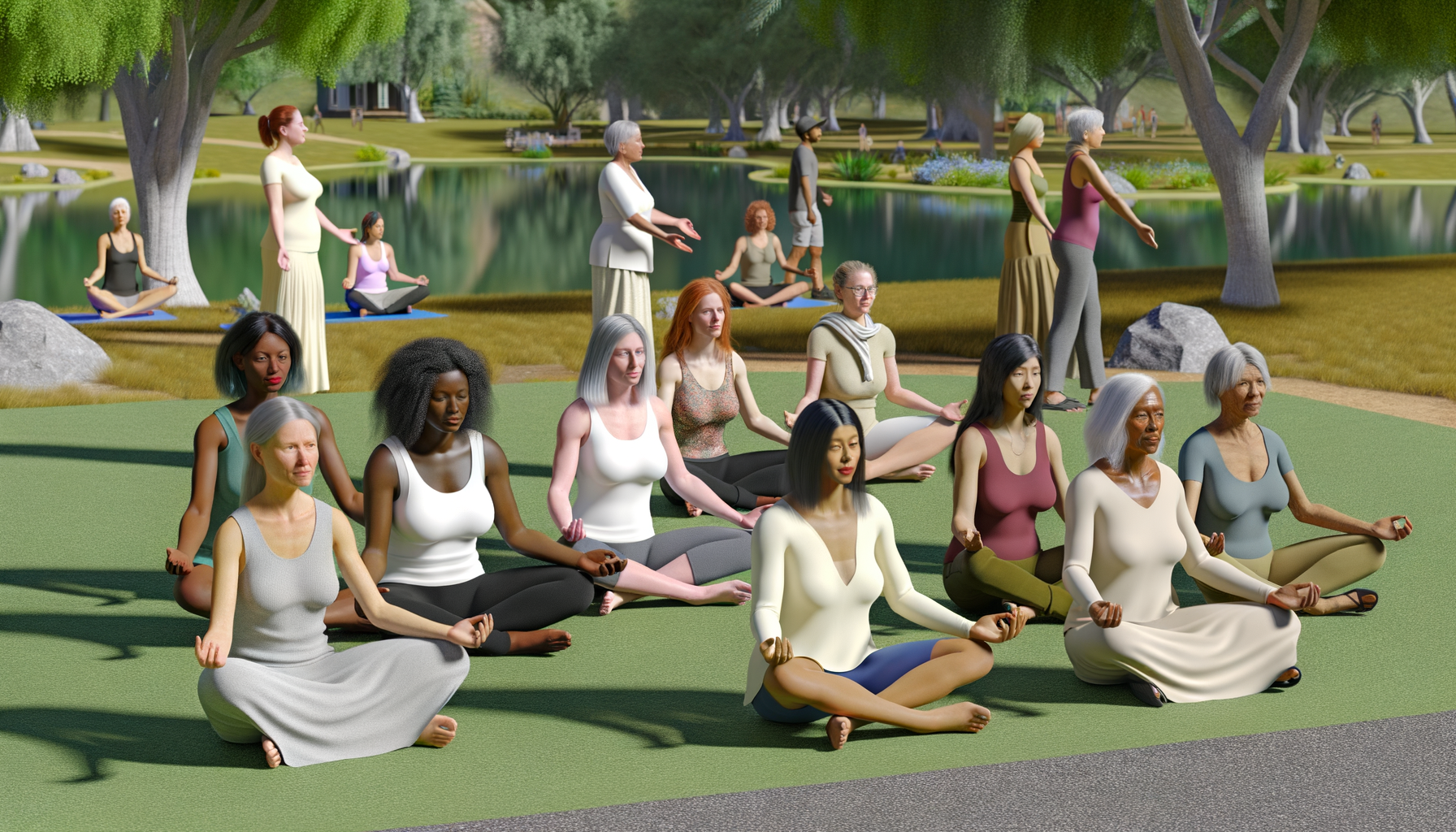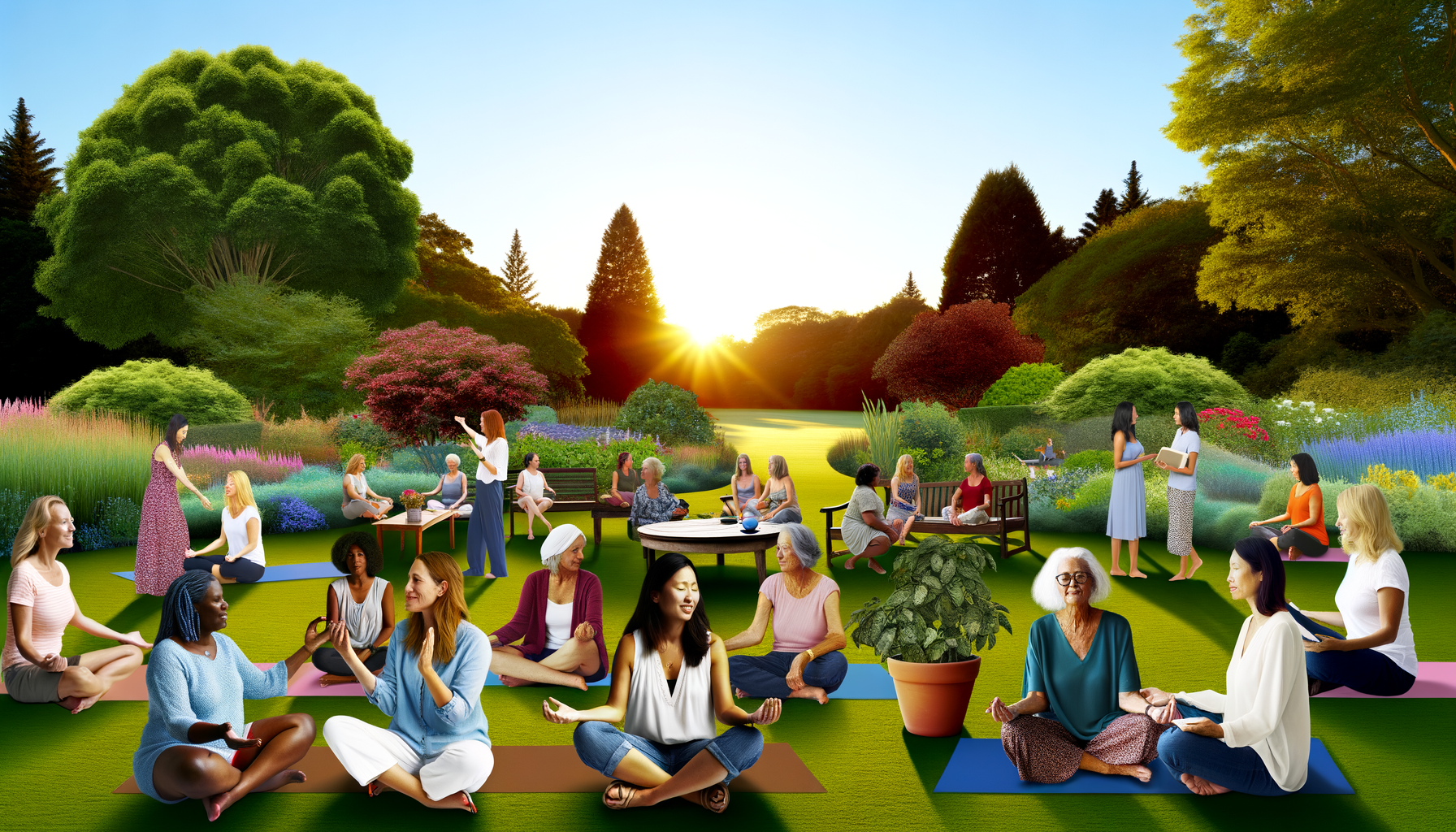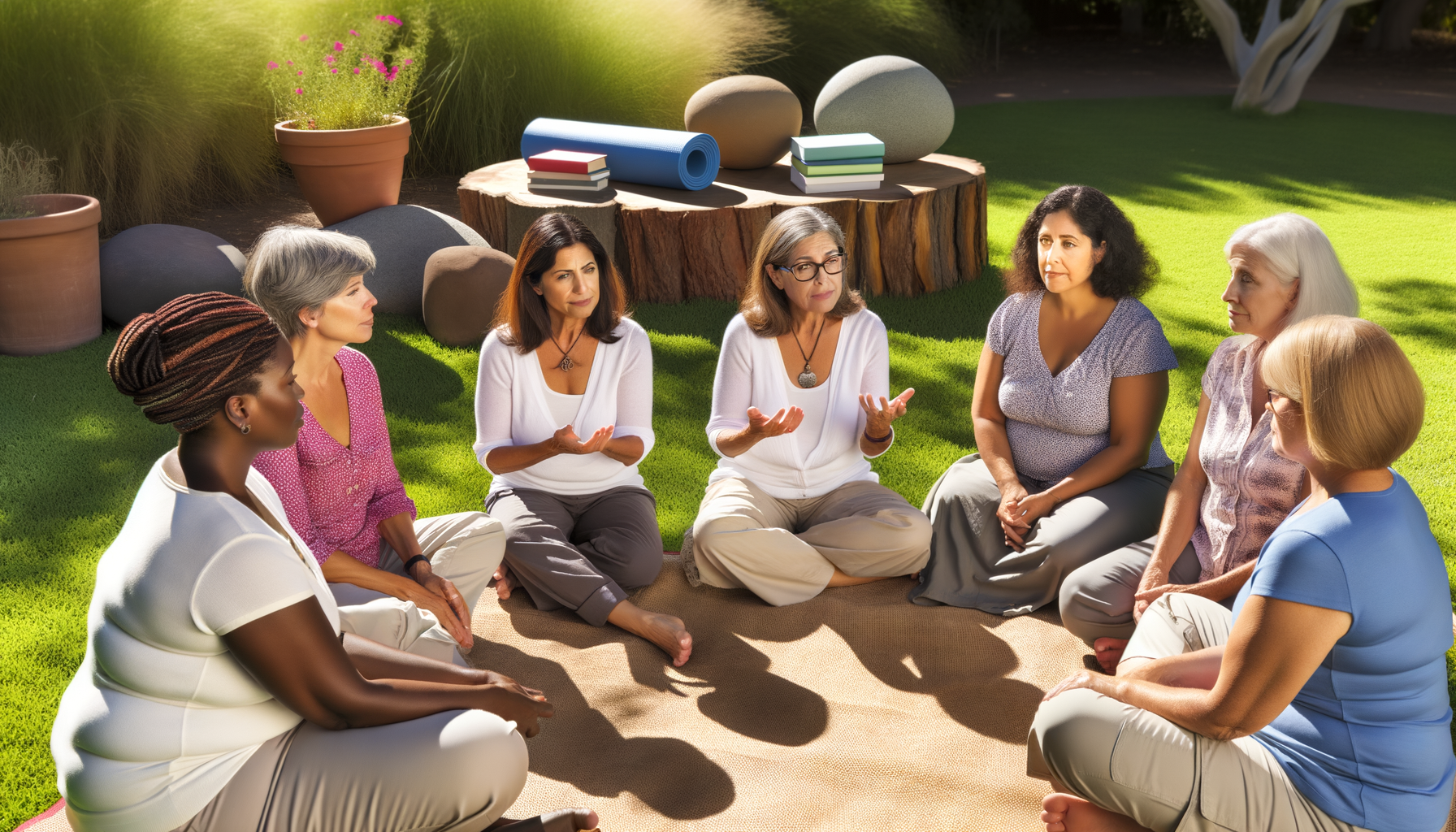
Introduction
The Importance of Setting Boundaries
Boundaries are the invisible lines we draw around ourselves to maintain balance and protect our well-being. They are essential for healthy relationships and a balanced life. Without boundaries, we risk losing ourselves in the demands and expectations of others, leading to stress, burnout, and a life that feels out of control. Setting boundaries is not about isolation; it’s about creating respectful spaces for individuality and mutual understanding.
Understanding the Art of Saying No
Saying no is a fundamental aspect of setting boundaries. It is a declaration of self-respect and a commitment to our values and priorities. However, many of us struggle with saying no, fearing it may come off as rude or selfish. But the art of saying no is about expressing our limits with clarity and kindness, ensuring that we do not compromise our well-being for the sake of pleasing others. It’s about making choices that align with our best interests and maintaining our integrity.
The Connection Between Boundaries and Well-being
There is a profound connection between our personal boundaries and our overall well-being. Boundaries help us define who we are and what we value. They allow us to differentiate our own emotions and needs from those of others, leading to improved self-esteem and a stronger sense of identity. When we establish clear boundaries, we give ourselves the space to grow, to rest, and to engage with the world on our terms, which is essential for our mental and emotional health.
In conclusion, boundaries are not barriers but the foundations upon which we build a life of respect, love, and fulfillment. They empower us to navigate our relationships and the world with confidence and grace. As we delve deeper into the nuances of boundary setting, we will explore practical strategies and insights that enable us to say no with love and respect, enhancing our well-being and enriching our lives.
Recognizing When to Set Boundaries
Identifying Personal Limits
Understanding your personal limits is the cornerstone of setting healthy boundaries. These limits are deeply personal and can vary greatly from one individual to another. They are shaped by your values, beliefs, and experiences. To identify your personal limits, reflect on situations that make you feel uncomfortable, stressed, or taken advantage of. Consider what you can tolerate and accept, as well as what makes you feel violated or depleted. It’s important to recognize that your limits may evolve over time and require periodic reassessment.
Signs of Overcommitment and Resentment
Overcommitment often leads to feelings of resentment, which serve as clear indicators that your boundaries are being compromised. Signs of overcommitment include a packed schedule with no time for self-care, constant fatigue, and a sense of obligation rather than choice. Resentment may manifest as irritation, anger, or a feeling of being unappreciated or used. These emotions are signals that it’s time to reevaluate your commitments and assert your boundaries.
Listening to Your Intuition
Your intuition acts as an internal alarm system, alerting you when boundaries need to be set. It’s that gut feeling or instinctual response that something isn’t right. When you experience unease or discomfort in a situation, it’s likely your intuition signaling a boundary has been crossed. Trusting and acting upon these intuitive feelings is crucial for maintaining your well-being and personal integrity.
The Role of Self-Awareness
Self-awareness is the ability to understand your own emotions, reactions, and behaviors. It plays a pivotal role in recognizing when to set boundaries. By being self-aware, you can identify what you are feeling and why, which helps in pinpointing the specific boundaries that need to be established or reinforced. Cultivating self-awareness through practices like mindfulness, journaling, or therapy can enhance your ability to set effective and respectful boundaries.
In conclusion, recognizing when to set boundaries is an essential skill for a balanced and fulfilling life. By identifying your personal limits, being mindful of signs of overcommitment and resentment, listening to your intuition, and fostering self-awareness, you can protect your well-being and nurture healthy relationships based on mutual respect and understanding.
Communicating Boundaries with Love
Using ‘I’ Statements
When it comes to setting boundaries, the language we use can make a significant difference. Utilizing ‘I’ statements is a powerful way to express your feelings without casting blame or judgment on others. For example, saying “I feel overwhelmed when I have too many commitments” is more effective and less confrontational than “You are asking too much of me.” This approach centers your experience and allows for a more empathetic dialogue about your boundaries.
Expressing Your Needs Clearly
Clarity is kindness when communicating boundaries. It’s essential to be explicit about your needs and expectations to avoid misunderstandings. If you need personal space, for instance, articulate what that looks like for you. You might say, “I value our time together, but I also need time alone to recharge. Can we agree on certain nights as ‘me time’?” By being clear, you give others the opportunity to respect your boundaries and show their love and respect in return.
Maintaining Empathy and Understanding
While asserting your boundaries, it’s crucial to maintain a stance of empathy and understanding. Recognize that the person you’re speaking to has their own feelings and boundaries. Approach the conversation with the intent to understand and be understood, rather than to win an argument. This mutual respect fosters a loving environment where boundaries are respected.
Avoiding Guilt and Apologies
Setting boundaries is an act of self-care and should not be accompanied by guilt or excessive apologies. It’s okay to be firm and assertive about your limits. You do not need to say sorry for taking care of your well-being. For example, instead of saying, “I’m sorry, but I can’t lend you money,” you can confidently state, “I’m not in a position to lend money right now.” This communicates your boundary without implying that you’ve done something wrong by establishing it.
Respecting Others’ Boundaries
Acknowledging and Honoring Differences
Respecting others’ boundaries begins with the recognition that each individual has their own set of values, beliefs, and comfort levels. Acknowledging and honoring these differences is essential to maintaining healthy relationships. It’s important to understand that what may be acceptable to one person can be uncomfortable or even offensive to another. By being mindful of these differences, we can avoid unintentionally crossing boundaries and ensure that our interactions are based on mutual respect.
The Reciprocity of Respect
Respect is a two-way street. When we demonstrate respect for others’ boundaries, we foster an environment where our own boundaries are more likely to be respected in return. This reciprocity is the foundation of trust and understanding in any relationship. It’s crucial to remember that respecting boundaries is not about conceding or losing something; rather, it’s about building a relationship where all parties feel safe, valued, and heard.
Learning from Rejection
At times, respecting others’ boundaries may result in rejection or the need to adjust our own expectations. While this can be challenging, it’s also an opportunity for personal growth. Learning from rejection involves reflecting on the experience, understanding the reasons behind the boundary, and using this knowledge to navigate future interactions more thoughtfully. It’s a process that not only strengthens our empathy but also enhances our ability to communicate and connect with others on a deeper level.
In conclusion, respecting others’ boundaries is a fundamental aspect of building and maintaining healthy relationships. It requires us to be attentive, empathetic, and willing to learn from our experiences. By doing so, we create a space where everyone can feel secure and respected, paving the way for more meaningful and fulfilling connections.
Practical Strategies for Saying No
Delaying Your Response
One effective strategy for saying no is to give yourself time to think about the request. This can be particularly useful when you’re caught off guard or when you’re unsure about your availability or interest. By saying, “Let me think about it and I’ll get back to you,” you create a buffer that allows you to assess your priorities and decide without pressure. This approach also gives you the opportunity to craft a respectful and clear response, whether it’s a yes or a no.
Offering Alternatives
When you need to decline a request, offering an alternative can soften the blow and show that you still care. For instance, if you’re unable to participate in a project, you might suggest someone else who could help, or if you’re invited to an event that you can’t attend, propose a different time to meet. Phrases like, “I can’t do this, but how about…?” demonstrate your willingness to support the person, even if you’re unable to fulfill their initial request.
Being Firm Yet Kind
Assertiveness is key when saying no. You can be firm in your decision while still being kind and respectful. Use clear language that leaves little room for misunderstanding or false hope. For example, “I appreciate your offer, but I’m not able to commit to that right now,” conveys a definitive no without being harsh. Remember, it’s not just what you say, but how you say it—maintain a polite tone and show empathy for the other person’s situation.
Practicing Regularly
The more you practice saying no, the easier it becomes. Start with small, low-stakes situations and work your way up to more significant requests. Regular practice will help you become more comfortable with setting boundaries and communicating them effectively. It’s also helpful to remind yourself of the reasons why you’re saying no, whether it’s to protect your time, reduce stress, or prioritize your well-being. Over time, saying no with love and respect will become a natural part of your interactions.
Navigating Difficult Conversations
Handling Pushback and Disappointment
When you communicate your boundaries, you may encounter pushback or disappointment from others. It’s important to recognize that their reactions are not a reflection of your worth or the validity of your boundaries. To handle such responses, remain empathetic but firm. Acknowledge the other person’s feelings (“I understand this might be disappointing for you”) while reiterating your boundary (“However, this is what I need for my well-being”).
Staying Calm Under Pressure
During a difficult conversation, maintaining composure is key. Take deep breaths and remind yourself of the reasons behind your boundaries. If you feel overwhelmed, it’s okay to pause the conversation and suggest revisiting it when both parties are calmer. Remember, staying calm helps you communicate more effectively and reinforces the seriousness of your boundaries.
Reaffirming Your Decision
After setting a boundary, you might feel tempted to backtrack, especially if you’re met with resistance. It’s crucial to reaffirm your decision to yourself and the other person. Be clear and concise, avoiding lengthy justifications or apologies. A simple statement like “I’ve given this a lot of thought, and my decision stands” can be powerful.
Seeking Support When Needed
Setting boundaries can be emotionally taxing. Don’t hesitate to seek support from friends, family, or a professional if you’re struggling. They can provide a sounding board, offer encouragement, and help you navigate any guilt or anxiety you may experience. Remember, seeking support is a sign of strength, not weakness.
Conclusion
The Power of Healthy Boundaries
Throughout this article, we’ve explored the multifaceted nature of boundaries and their profound impact on our lives. Healthy boundaries are the invisible frameworks that support our mental, emotional, and physical well-being. They are not barriers to keep others out, but rather the gates that allow us to navigate our relationships with autonomy and respect. By setting and maintaining these boundaries, we empower ourselves to live authentically and to engage with others in a way that preserves our integrity and peace of mind.
Embracing a Life of Respect and Self-Care
Embracing a life of respect and self-care begins with the recognition that we are worthy of love and respect just as we are. Our boundaries are a testament to that self-worth. They enable us to say no with love and respect, not only to others but to ourselves as well. When we honor our own limits, we teach others how to treat us and set the stage for mutually respectful relationships. Self-care is not selfish; it is the foundation upon which we build a life that reflects our values, desires, and needs.
Continuing the Journey of Personal Growth
The journey of personal growth is ongoing, and our boundaries will evolve as we do. As we encounter new experiences and relationships, we may find that our needs and limits change. This is a natural and healthy part of growth. It requires us to be self-aware, to listen to our intuition, and to be willing to communicate our evolving boundaries with clarity and kindness. By continuing to practice the art of saying no with love and respect, we not only protect our well-being but also foster an environment where others feel empowered to do the same.
In conclusion, the power of healthy boundaries cannot be overstated. They are essential for a life filled with respect, self-care, and personal growth. As we move forward, let us carry with us the understanding that boundaries are a form of self-love and a gift to those around us. By respecting our own limits and those of others, we create a world where everyone has the space to thrive.








